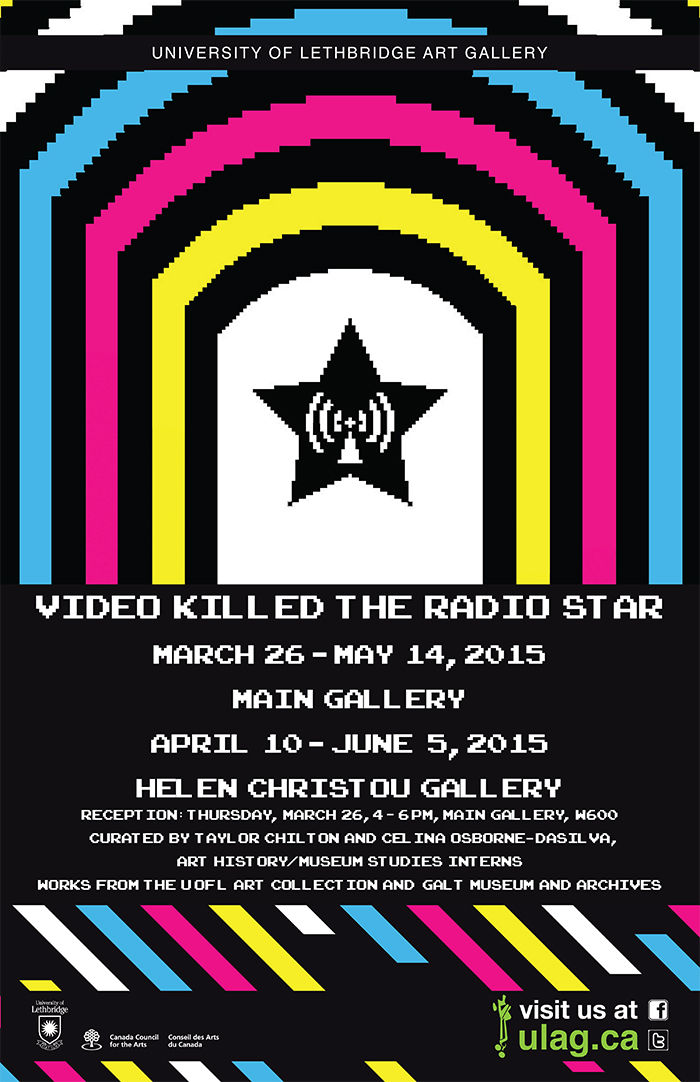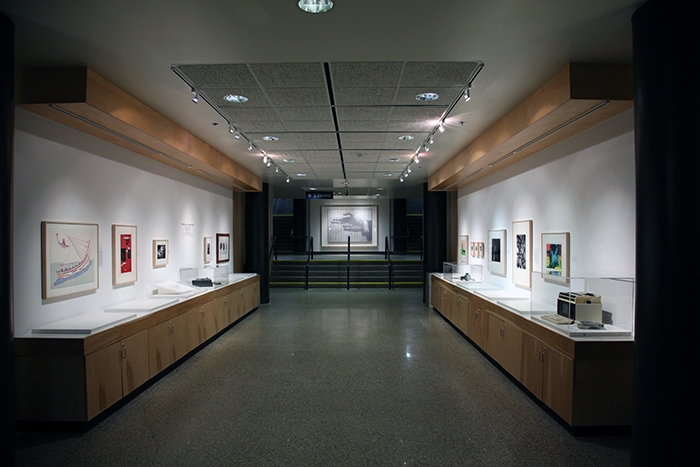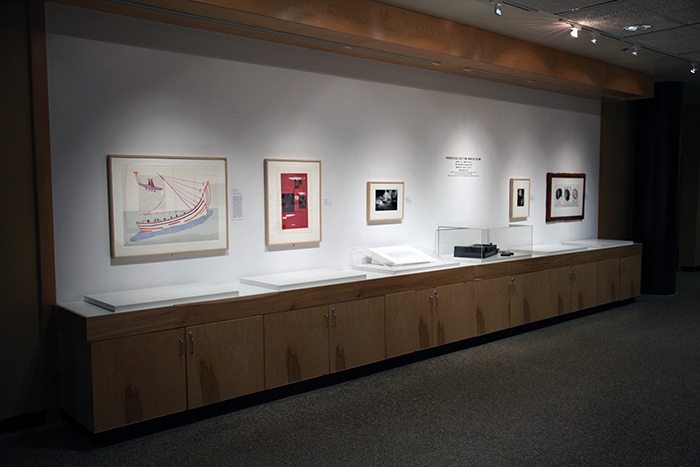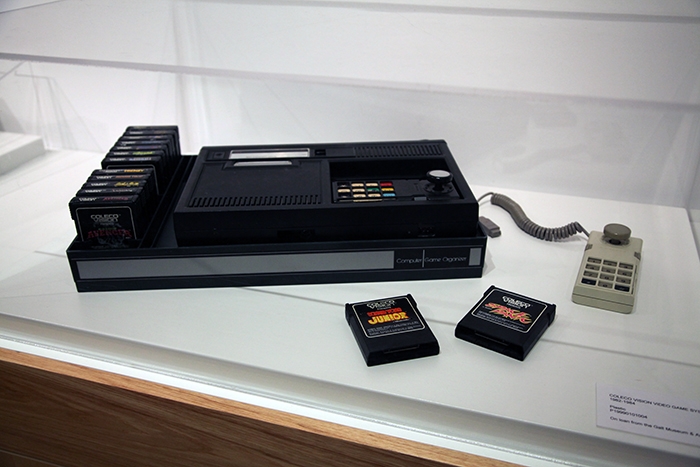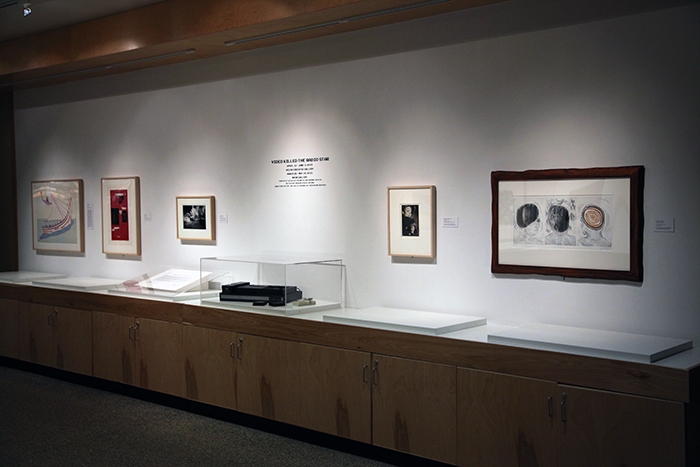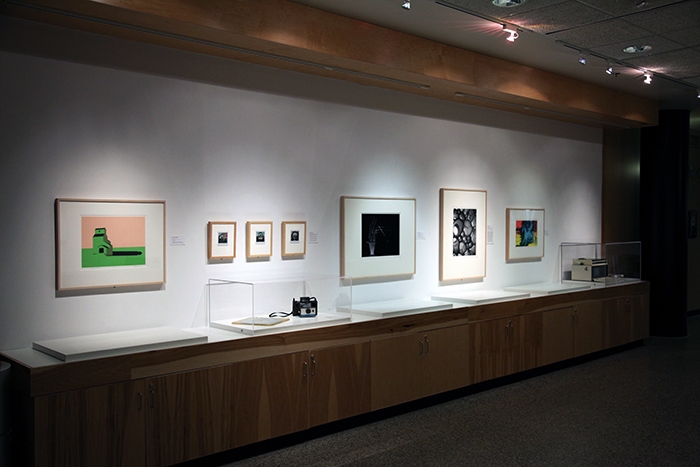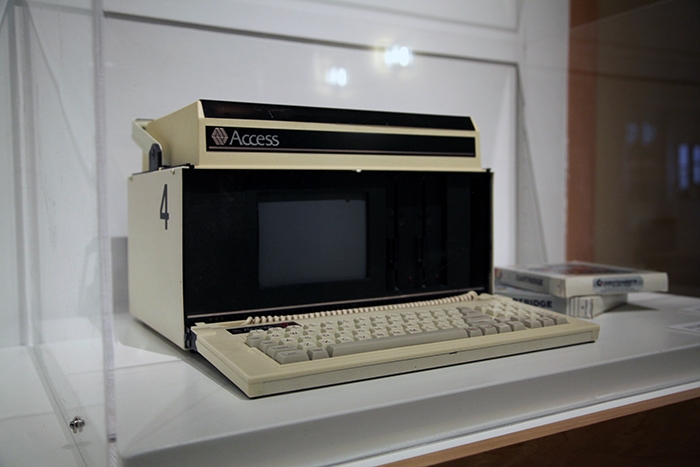Curated by Taylor Chilton & Celina Osborne-Dasilva, Museum Studies Interns
Works from the U of L Art Collection and Galt Museum & Archives
Senior students in the Art History/Museum Studies program explore art, ideas and objects from the 1980s by curating an exhibition from the U of L Art Collection and Galt Museum & Archives.
Curatorial Statement
TThe 1980s was a decade when the world was in constant flux. It was 10 years of untamed fashion styles and of remarkable technological innovations. Madonna was singing about being a virgin, men had mullets, and the Rubik’s Cube seemed impossible to solve, while Western society was being introduced to new forms of entertainment and devices that changed the way that people lived. Video gaming flourished in the ‘80s. Who could forget “Pacman”? This minimalistic form of entertainment was addicting to play and it was totally rad! An unforgettable change during the decade, besides Michael Jackson’s physical transformations, was the personal computer and cellphone. Computers were developed for household use during the early ‘80s and in ‘84 the mobile phone was officially available to the public. It didn’t end there. The ‘80s also welcomed the home video recorder, the VCR, CDs, cable television and, of course, the “World Wide Web”.
The technological advances in the ‘80s also affected the art world. Though it was first introduced in the ‘60s, video art took off in the ‘80s. Artists used technology to open up new possibilities in form and imagery. With (relatively) smaller and more affordable equipment, and its important connection to social activism around HIV/AIDS, feminism and identity politics, video art presented itself as art and a mode for change. At the time, and still true today, video art was not highly collected. Video works do not have the financial value of other art, such as paintings, and the technology rapidly changes, making the equipment and specific formats obsolete. Given that this exhibition is drawn from the University of Lethbridge collection, there was not access to video works , but other art/technology works were still available to fit within the ‘80s theme. Even though not all of the works exhibited incorporate technology in their creation, the more ‘traditional’ media were still being created at this time and were just as relevant to ‘80’s art production.
By including objects from the Galt Museum & Archives, we aim to give a taste of what technology looked like decades ago. For example, the featured Access Computer, once used by the University of Lethbridge’s Faculty of Management, shows the early beginnings of the personal computer and what would eventually lead to a laptop. The Coleco video game system may not have been used by artists, like the Polaroid camera would have, but it helps provide a sense of the era and find inspiration for what was possible both in art and technology during the 1980s.
– Taylor Chilton & Celina Osborne-Dasilva, Museum Studies Interns
